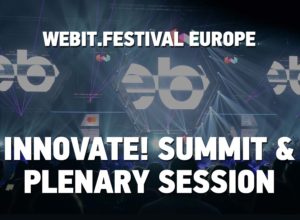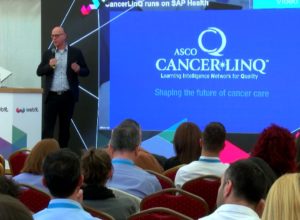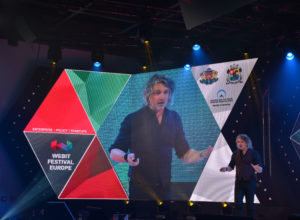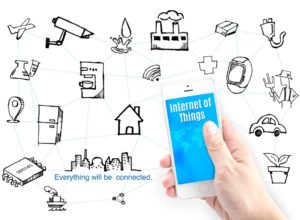Tag: sap
For Innovate, press 5
If you look just 10 years back...
you can easily see the rapid evolution of digital industry. Everything is smart - phones, watches, we even have home AI assistants so that our homes can be smart. At this point we cannot and we don’t want to imagine the world without the technological advantages. More or less, this is normal: for the century we live in, for our jobs, for our life nowadays. So 10 years in our century is a period in which A LOT can change. Just a few months ago Webit celebrated its 10-year anniversary. The festival grew rapidly to become one of Europe’s (and even world’s) largest forums for innovation, technology, entrepreneurship, policy and startups. /You can watch the trailer here: https://youtu.be/695bBvsv6vQ/ Webit.Festival gathers tech, digital and policy elite to re-invent and pave the digital future of Europe.This year is no exception.
We would like to introduce you to some of our confirmed 2019 speakers. So in the next few weeks we will share some interesting information about the amazing line up that we are preparing for this year’s Festival.Today we’d like you to meet 5 Innovation Gurus:
On the Innovate Stage you will see: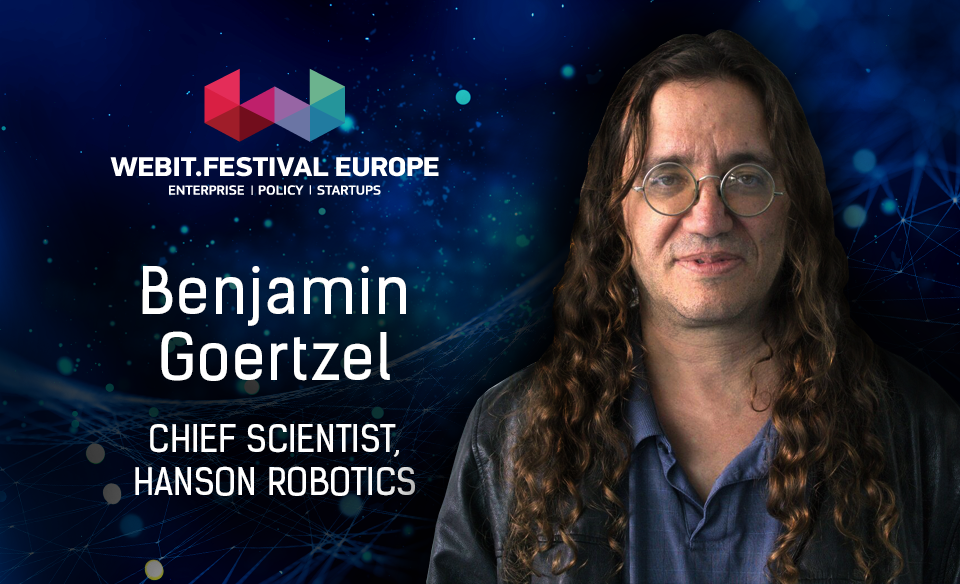 Dr. Goertzel is one of the world’s foremost experts in Artificial General Intelligence. (It is a subfield of AI oriented toward creating thinking machines with general cognitive capability at the human level and beyond.) Ben also has decades of expertise applying AI to practical problems in areas ranging from natural language processing and data mining to robotics, video gaming, national security and bioinformatics. He has published 20 scientific books and 140+ scientific research papers. He is also the main architect and designer of the OpenCog system and associated design for human-level general intelligence.
Dr. Goertzel is one of the world’s foremost experts in Artificial General Intelligence. (It is a subfield of AI oriented toward creating thinking machines with general cognitive capability at the human level and beyond.) Ben also has decades of expertise applying AI to practical problems in areas ranging from natural language processing and data mining to robotics, video gaming, national security and bioinformatics. He has published 20 scientific books and 140+ scientific research papers. He is also the main architect and designer of the OpenCog system and associated design for human-level general intelligence.
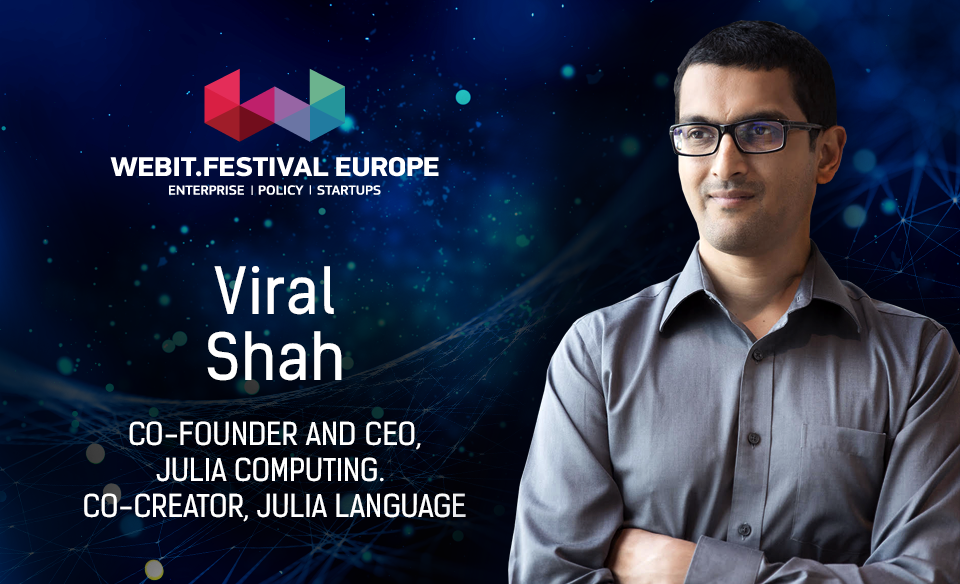 Dr. Viral Shah is CEO of Julia Computing, co-creator of the Julia programming language and winner of the 2019 James H. Wilkinson Prize for Numerical Software.
He implemented a risk management system for derivatives trading on the National Stock Exchange in India.
Viral co-authored Rebooting India with Nandan Nilekan. He is also co-founder of Infosys and founding chairman of the Unique Identification Authority of India, which has delivered unique bio-metric identification to 1.2 billion Indians in the past decade. Rebooting India describes Nandan and Viral's experience implementing a large-scale technology project in government. Viral and his co-creators started Julia as a hobby but it is now their full time occupation at Julia Computing.
Julia is the fastest dynamic programming language for numeric and scientific computing, including artificial intelligence and machine learning. Julia is free and open source and is used by more than 10,000 enterprises and 1,500 universities with over 2 million downloads, 1,900+ packages and 800+ open source contributors.
Dr. Viral Shah is CEO of Julia Computing, co-creator of the Julia programming language and winner of the 2019 James H. Wilkinson Prize for Numerical Software.
He implemented a risk management system for derivatives trading on the National Stock Exchange in India.
Viral co-authored Rebooting India with Nandan Nilekan. He is also co-founder of Infosys and founding chairman of the Unique Identification Authority of India, which has delivered unique bio-metric identification to 1.2 billion Indians in the past decade. Rebooting India describes Nandan and Viral's experience implementing a large-scale technology project in government. Viral and his co-creators started Julia as a hobby but it is now their full time occupation at Julia Computing.
Julia is the fastest dynamic programming language for numeric and scientific computing, including artificial intelligence and machine learning. Julia is free and open source and is used by more than 10,000 enterprises and 1,500 universities with over 2 million downloads, 1,900+ packages and 800+ open source contributors.
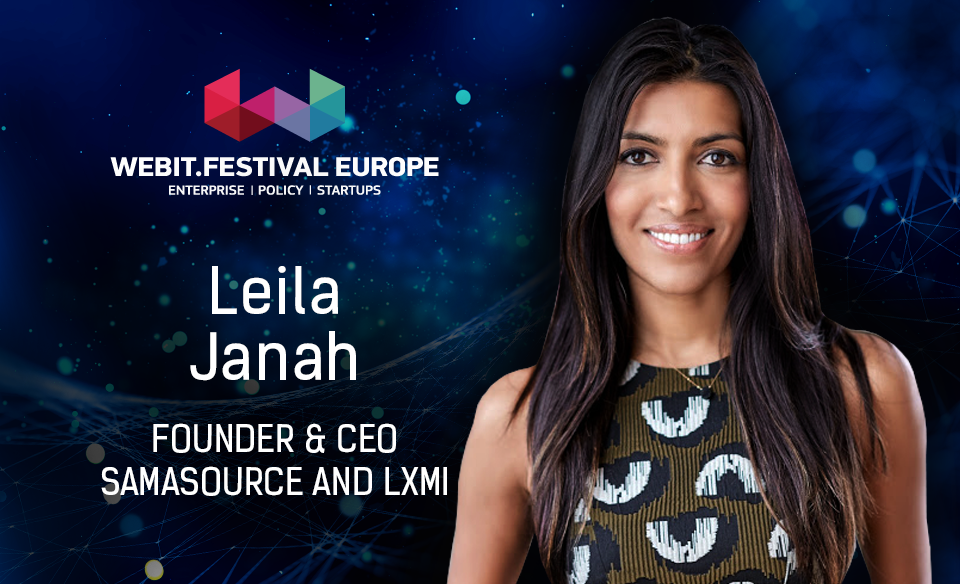 Leila Janah is the Founder and CEO of Samasource and LXMI, two companies that go beyond charity to #givework to low-income people around the world using cutting-edge social enterprise models in technology and luxury skincare, respectively. She is the author of the book Give Work (Penguin/RandomHouse).
Leila is a Young Global Leader of the World Economic Forum, a former Director of CARE USA, a TechFellow, recipient of the inaugural Club de Madrid Young Leadership Award, and also the youngest person to win a Heinz Award in 2014. She is one of Fortune’s Most Promising Entrepreneurs. And she was the subject of cover stories in Entrepreneur, Fast Company, and Conscious Company Magazines.
Leila Janah is the Founder and CEO of Samasource and LXMI, two companies that go beyond charity to #givework to low-income people around the world using cutting-edge social enterprise models in technology and luxury skincare, respectively. She is the author of the book Give Work (Penguin/RandomHouse).
Leila is a Young Global Leader of the World Economic Forum, a former Director of CARE USA, a TechFellow, recipient of the inaugural Club de Madrid Young Leadership Award, and also the youngest person to win a Heinz Award in 2014. She is one of Fortune’s Most Promising Entrepreneurs. And she was the subject of cover stories in Entrepreneur, Fast Company, and Conscious Company Magazines.
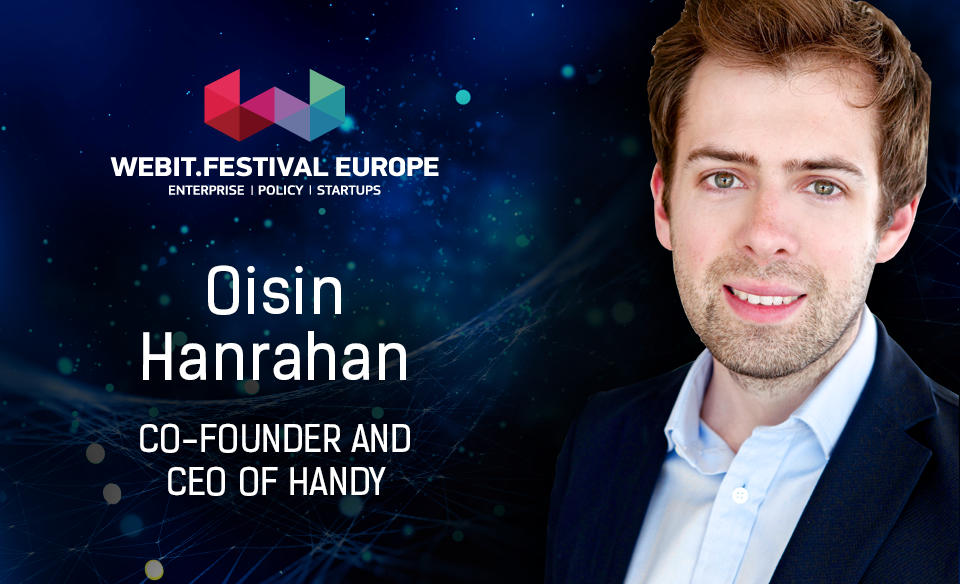 Oisin Hanrahan is a serial entrepreneur with deep knowledge of two-sided marketplaces and a keen interest in technology and politics. Oisin is currently the co-founder and CEO of Handy which he founded in 2012. Handy is changing the way that people book and provide home services. From home cleaning to TV mounting, smart home setup to furniture assembly, people turn to Handy for a seamless, fast and top-quality experience that provides them with access to the home services they need.
Oisin also advises and invests in startups, particularly in New York City. Major media extensively featured Oisin’s work, including CNBC, The Wall Street Journal, and The New York Times.
Oisin Hanrahan is a serial entrepreneur with deep knowledge of two-sided marketplaces and a keen interest in technology and politics. Oisin is currently the co-founder and CEO of Handy which he founded in 2012. Handy is changing the way that people book and provide home services. From home cleaning to TV mounting, smart home setup to furniture assembly, people turn to Handy for a seamless, fast and top-quality experience that provides them with access to the home services they need.
Oisin also advises and invests in startups, particularly in New York City. Major media extensively featured Oisin’s work, including CNBC, The Wall Street Journal, and The New York Times.
And last but not least, a dear Webit friend -
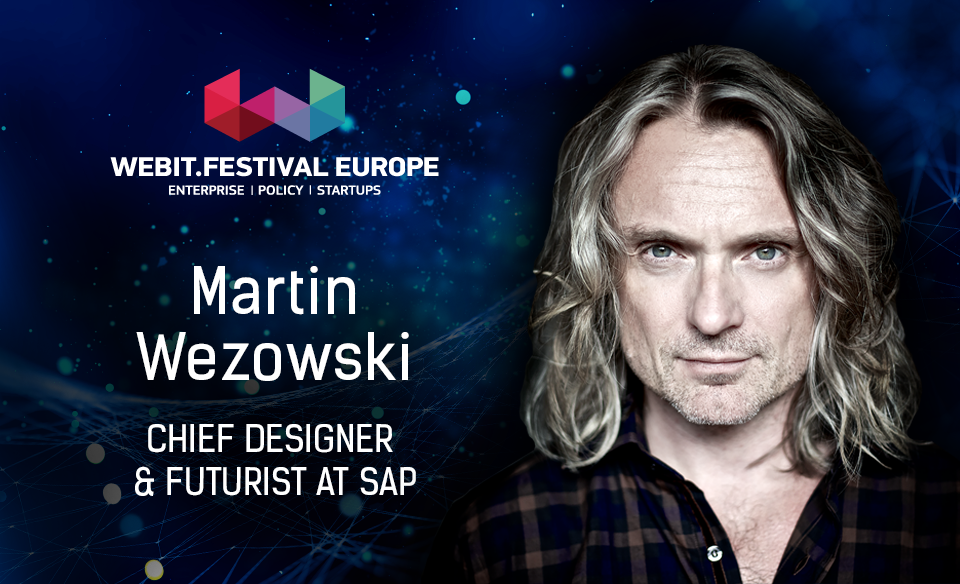 Martin Wezowski, has been loving and living design and tech his whole career.
As Chief Designer for SAP's Innovation Center Network & Chief Innovation Office he crafts future outlooks, strategies and products, defines and runs innovation frameworks to find out what’s next for SAP and the future of work. He frequently shares his passion for the future of technology and design (TEDx, SXSW, CES, Ada Lovelace, CeBIT, MOBx, Grace Hopper, SIME, MLOVE etc.).
He builds on his international adventures stretching from Poland, Sweden, China to Germany and across companies like SAP, Sony and Huawei, working with consumer electronics, media services and business software.
Martin Wezowski, has been loving and living design and tech his whole career.
As Chief Designer for SAP's Innovation Center Network & Chief Innovation Office he crafts future outlooks, strategies and products, defines and runs innovation frameworks to find out what’s next for SAP and the future of work. He frequently shares his passion for the future of technology and design (TEDx, SXSW, CES, Ada Lovelace, CeBIT, MOBx, Grace Hopper, SIME, MLOVE etc.).
He builds on his international adventures stretching from Poland, Sweden, China to Germany and across companies like SAP, Sony and Huawei, working with consumer electronics, media services and business software.
Тake advantage of the special Early bird prices and book your ticket for Webit.Festival Europe 2019 for as low as 100 EUR!
Healthcare at its Gutenberg moment
“The main and huge problem in healthcare is data. Big data and big amounts of it. You can’t start creating huge clinical data warehouses anymore. The amount of data is simply exploding.”In case you’re wondering who Gutenberg is, he is the guy who invented the printing press and thus changed everything back in the times by starting the Printing Revolution. Now healthcare is at the doorstep of a suchlike event. Dr. Clemens Suter-Crazzolara, VP of Product Management for Health & Precision Medicine at SAP gave a keynote at Webit.Festival in Sofia about what are people and companies already doing with the help of technology in order to improve patients’ and doctors’ health experience and the treatment of patients. The main and huge problem in healthcare is data. Big data, and big amounts of it. If we walk in any given hospital, we inevitably notice that lots of the data we provide or data already collected, is taken on notes, sheets or some format of paper. Other industries are moving to digitalization with rocket speed but in healthcare it is not happening and this process is still somehow a struggle. Privacy, security and access to the correct data are all difficulties underlying ahead of healthcare in its process of adapting to digitalization. You can’t start creating huge clinical data warehouses anymore. The amount of data is simply exploding. You have to think of intelligent ways that the data stays in different locations, but for instance, you can send federated queries to those locations and then collect the needed answers. The use of mobile devices increases with each passing day. There are many apps which people use for consulting on their physical health, consulting with a physician online or simply googling their symptoms but the patient engagement is not fully tailored to both the patient and the physician. The need of a common platform that collects the experience and practices from physicians all around the world, as well as helping to collaborate and get information from one another and facilitating their day to day work is at the roots of change in the health system and that’s the thing SAP is trying to create. You can watch the keynote of Dr. Clemens Suter-Crazzolara here. https://www.youtube.com/watch?v=AwyLgKvCaBQ Physical and mental health, personal care and wellbeing are an ever growing theme in today’s everyday life. Recognizing it as an integrant area of value and interest, the Health & Wellbeing Summit at Webit.Festival Sofia 2018 will gather again top speakers from the industry, unveiling top tendencies and knowledge from their practice. Have a glance at last year’s Webit with some of our best photos and check our different ticket options here. [easingslider id="4954"]
How to design the future we want to live in
No matter if we like it or not, we are going to spend the rest of our lives in the future. So we better sit down and talk about the best ways of designing the future we truly want to live in together.
And while “designing” the future may sound strange, the Chief Designer of SAP Martin Wezowski is sure that the ability to articulate and visualize our ideas will be among the most important skills in the years ahead.
During his long career Wezowski moved across a broad range of design disciplines from visual, interaction, usability, service to system design. Right now he is on a mission to map, build and inspire a brighter future for the generations to come. He was among the top speakers at Webit.Festival Europe and explained to our guest his vision of this process.
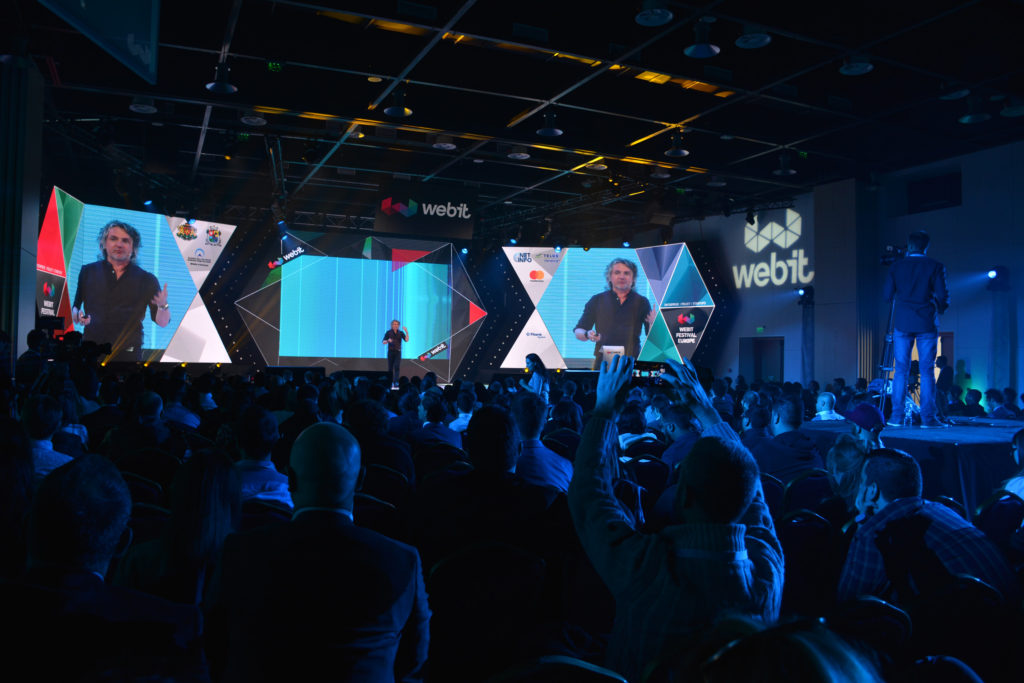 The Chief Designer of SAP Martin Wezowski[/caption]
In the next 1000 years our brains will not grow or develop that much, so that we can catch up with the exponential growth of technological capabilities. That is why our fast lane to evolution passes through symbiosis with machines.
This is already not a science fiction, because there are companies developing interface solutions for connecting our brain to a computer. There are paralyzed people controlling computers with their minds imagining they are moving.
Wezowski thinks that to build a better future we must use a method, called a human-centered design.
The Chief Designer of SAP Martin Wezowski[/caption]
In the next 1000 years our brains will not grow or develop that much, so that we can catch up with the exponential growth of technological capabilities. That is why our fast lane to evolution passes through symbiosis with machines.
This is already not a science fiction, because there are companies developing interface solutions for connecting our brain to a computer. There are paralyzed people controlling computers with their minds imagining they are moving.
Wezowski thinks that to build a better future we must use a method, called a human-centered design.
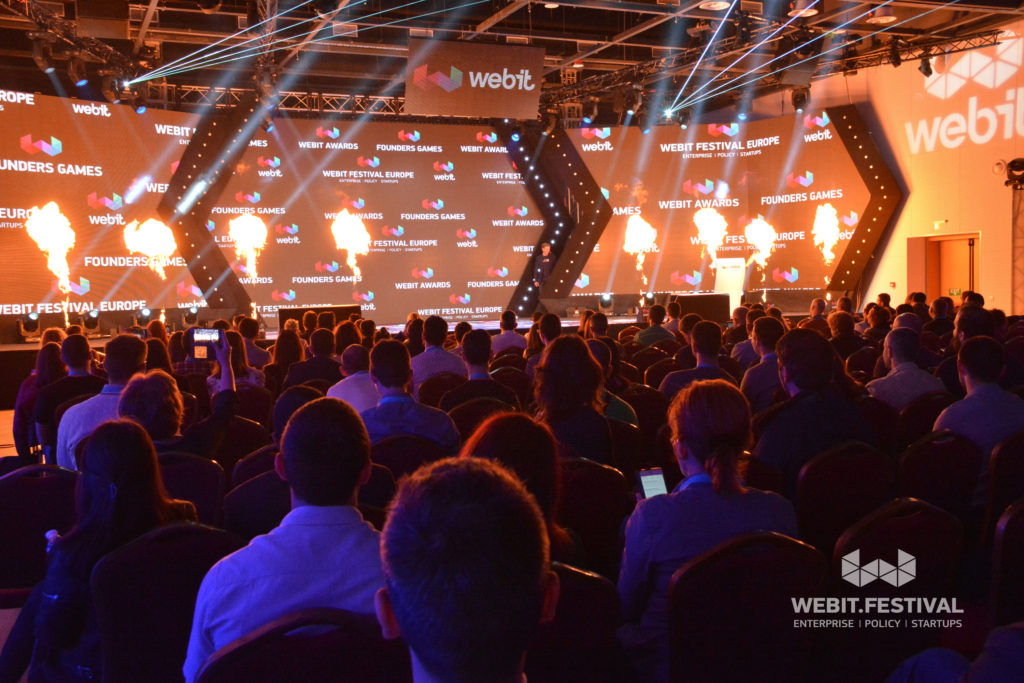 Wezowski advised Webit’s guests to try and design the relationships they want to have with their customers and then to start building products and services around their needs, because “content may be the king of digital, but context is the King Kong”.
The business is designing products and services. These services shape our behavior, like the smartphones changed our everyday lives. Our behaviours shape our communities and discussions. Communities shape our societies and they are shaping the course of politics. So the design have serious reflection on the political life.
SAP’s Chief Designer predicted that in a decade somewhere in Europe we will have a minister, that is not only a clever mathematician, but an expert with strong design and innovation background, because this will be some of the most important factors for shaping our politics in the near future.
Wezowski advised Webit’s guests to try and design the relationships they want to have with their customers and then to start building products and services around their needs, because “content may be the king of digital, but context is the King Kong”.
The business is designing products and services. These services shape our behavior, like the smartphones changed our everyday lives. Our behaviours shape our communities and discussions. Communities shape our societies and they are shaping the course of politics. So the design have serious reflection on the political life.
SAP’s Chief Designer predicted that in a decade somewhere in Europe we will have a minister, that is not only a clever mathematician, but an expert with strong design and innovation background, because this will be some of the most important factors for shaping our politics in the near future.
“The changes in our lives are happening faster and faster and are becoming a flow and a platform for you to utilize as you want. But it is also a platform of fear. Everything we change and everything we see as something that we do not recognize is something we think is dangerous”, he said.This is why the designer thinks that we must have a greater conversation about the processes that are happening today and the best ways of managing them. According to him the problem often is that people are not thinking about the future in a coherent ecosystemic way. [caption id="attachment_4963" align="aligncenter" width="640"]
 The Chief Designer of SAP Martin Wezowski[/caption]
In the next 1000 years our brains will not grow or develop that much, so that we can catch up with the exponential growth of technological capabilities. That is why our fast lane to evolution passes through symbiosis with machines.
This is already not a science fiction, because there are companies developing interface solutions for connecting our brain to a computer. There are paralyzed people controlling computers with their minds imagining they are moving.
Wezowski thinks that to build a better future we must use a method, called a human-centered design.
The Chief Designer of SAP Martin Wezowski[/caption]
In the next 1000 years our brains will not grow or develop that much, so that we can catch up with the exponential growth of technological capabilities. That is why our fast lane to evolution passes through symbiosis with machines.
This is already not a science fiction, because there are companies developing interface solutions for connecting our brain to a computer. There are paralyzed people controlling computers with their minds imagining they are moving.
Wezowski thinks that to build a better future we must use a method, called a human-centered design.
“Change is our innovation pipeline. Change, if you study it deeply, is you design brief. And it comes in systems. Once you have electric cars, to change the game globally you need an infrastructure. You need to articulate it and make a picture. It helps, because people already want it when they see it”, he said.The expert is sure that we need a culture and conversation beyond the economy, society, ethics and politics that we have today. He thinks that there is a growing need to understand the needs of people, even if they still don’t understand them. He gave an example with SAP, that is regarded as one of the most emphatic companies in the world, together with Netflix, Microsoft, Google and Facebook. Empathy is a very good tool to design the things that people actually need in their lives. It is a good tool for innovation. Good design is good business. High empathy and high performance go together, increasing value and market capitalization. This is what empathy gives you the ability to understand human beings and your customers.
 Wezowski advised Webit’s guests to try and design the relationships they want to have with their customers and then to start building products and services around their needs, because “content may be the king of digital, but context is the King Kong”.
The business is designing products and services. These services shape our behavior, like the smartphones changed our everyday lives. Our behaviours shape our communities and discussions. Communities shape our societies and they are shaping the course of politics. So the design have serious reflection on the political life.
SAP’s Chief Designer predicted that in a decade somewhere in Europe we will have a minister, that is not only a clever mathematician, but an expert with strong design and innovation background, because this will be some of the most important factors for shaping our politics in the near future.
Wezowski advised Webit’s guests to try and design the relationships they want to have with their customers and then to start building products and services around their needs, because “content may be the king of digital, but context is the King Kong”.
The business is designing products and services. These services shape our behavior, like the smartphones changed our everyday lives. Our behaviours shape our communities and discussions. Communities shape our societies and they are shaping the course of politics. So the design have serious reflection on the political life.
SAP’s Chief Designer predicted that in a decade somewhere in Europe we will have a minister, that is not only a clever mathematician, but an expert with strong design and innovation background, because this will be some of the most important factors for shaping our politics in the near future.
“Tim Brown from Ideo said that design is too important to be left only to designers. This is very very true because design and innovation is the same thing. The future is too important to be left to any of us. This is where need to get in one room and start this conversation. We have seen the exponential speed of change and we are able to do this. We have these conversations, but we need to spread them across the globe. And I think that if we can do it really really right we can build a future we want to live in. I was thinking we could start today”, he said.Soon you will be able to see Martin Wezowski’s full presentation on our YouTube channel. If you want to keep up with the latest trend in the world of digital economy and technology, then Webit.Festival is the right place for you. Visit our website and book 2 of our Super Earlybird tickets for Webit.Festival Europe 2018 for just €100. Feel the Webit vibe with some of the best photos from this year’s event! [easingslider id="4954"]
Uwa Kubah: From Internet of Things to Internet of People
Uwe Kubach, SAP, gаve a lecture at CEEDS'15 by Webit about the possibilities that Internet of Things gives us, why it is the next logical step after Machine-to-Machine and what challenges lie ahead of us. The main accent of the talk is “what IoT means for enterprise applications?” and it focuses on the impact that IoT has on big businesses and business models.
According to most of the surveys, we are going to have 12-50bn connected devices and 40-50% growth rate on the M2M market by 2020. The prices of communication modules have already declined by 80% and will most probably keep going down in the next decade.
There are several reasons why M2M and IoT have gained speed in the last years, one of them being the much cheaper price of technology nowadays. However, the most important reason probably is the fact that technology has become more mature and reliable. We can now build solutions and application on top of the technology. For example, we know you will have mobile coverage everywhere, which enables us to create solutions that would have been impossible 10 years ago.
Looking at the history of the field we can see how it all started with embedded systems – putting a computer or a piece of hardware inside a physical object, like microwaves or fridges. However, this system has no communication with the outside. The next step is networked embedded systems, where you have multiple piece communicating with each other, but still within the bounds of the physical object (e.g. all the different systems on your car). After that, the logical development was making these whole systems communication with each other. In the beginning it was just M2M (machine-to-machine) where one object can communicate with another one. The final step we have gotten to is the Internet of Things, where every one of those systems can talk to all the rest.
The important differences between M2M and IoT is that in the older model you only have 1-to-1 communication – two systems that are not integrated to work with each other can’t do it without extra programming. This problem is solved in the IoT structure, where all the systems use the same protocols, allowing you to pool all the information in the cloud and then let all the machines access it. There is still the challenge to find the right data models, that are not too specific and not too generic, but it is not unsolvable.
The best thing we get out of the Internet of Things structure is the real-time transparency. You don’t have to work on planning data or estimation anymore, as you can get all the data on demand. For example, you can get the number of cars on a certain road in real time and thus find a better route. This will also allow business to introduce new business models. For example, a company which has been selling compressors can now move to selling cubic meters of compressed air instead. You are not paying for the machine, but for the time you have used it. Having all the answers to questions like “how much has the machine been used for?”, “what is it used for?” and so on, will enable you to provide a much better service and customer support, being able to react to problems as they occur.
If the companies agree to share the information they get to other companies, this can enable us to improve the whole supply chain.
With the information flow coming in real time we can now not just analyse the data retrospectively and make changes according to the results, but we can set triggers that come into play in real time as the data changes. For example we can start an automated task if we see something going wrong with a system or a machine. From there on you can go even further and try to predict when something will go wrong with a machine.
To sum up, Internet of Things will enable us to not only create new business models but also improve existing ones. The access to real time data will change the way we perceive problems and the ways we deal with them. There are several challenges along the way but none of them unsolvable.
